I have been informed, that if there are no major holdups the above will be available as a free online book from Ubiquity Press in July 2021. Cover image courtesy of Michael Carter.
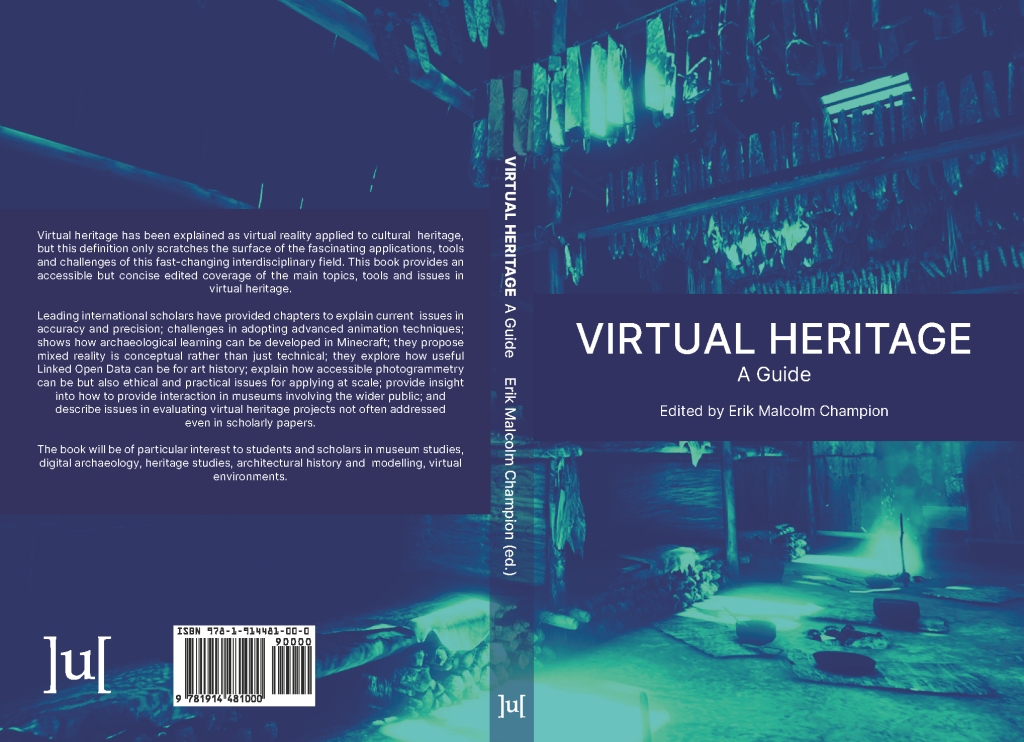
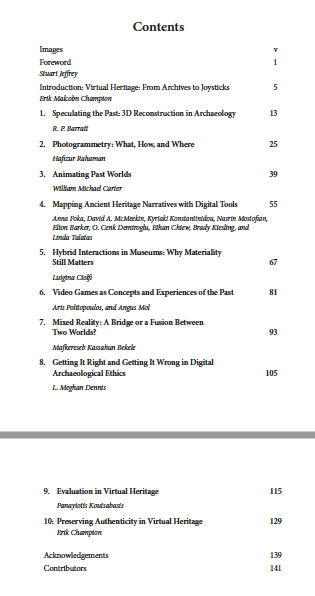


I have been informed, that if there are no major holdups the above will be available as a free online book from Ubiquity Press in July 2021. Cover image courtesy of Michael Carter.


Virtual Archaeology Review declared my and Dr Rahaman’s 2020 paper “Survey of #3D digital heritage repositories and platforms” their paper of the year.
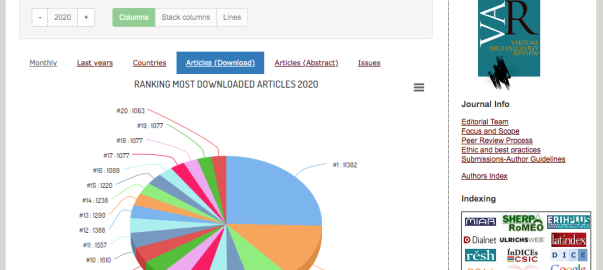
I am impressed that the Virtual Archaeology Review Journal (@VARjournal) has a stats page with % comparing views to downloads and abstracts listed (and a 3D -model- filter!) It can help authors check their abstract is on target (i.e. catchy). Our (with Dr Hafizur Rahaman @hafi2018) 2020 article Survey of 3D digital heritage repositories and platforms was 6th most downloaded article (3rd for 2020). NB had trouble viewing, had to refresh several times.
CHAMPION, Erik; RAHAMAN, Hafizur. Survey of 3D digital heritage repositories and platforms. Virtual Archaeology Review, [S.l.], v. 11, n. 23, p. 1-15, July 2020. ISSN 1989-9947. Available at: <https://polipapers.upv.es/index.php/var/article/view/13226>. Date accessed: 04 Jan. 2021. doi:https://doi.org/10.4995/var.2020.13226.

Something to explore at a later date but it seems X3D and Collada are recommended when placing metadata (like exif) in a 3D file.

Cultural Heritage Infrastructures in Digital Humanities (2017) is free to access for one week, get free access to the book (via this link) for 7 days.
After this 7-day period, you can buy a copy for £10/$15!
You can also visit the official Routledge History, Heritage Studies etc. Twitter page
and thanks to Routledge editor Heidi Lowther.
Infrastructure Requirements For A World Heritage Archival Infrastructure
Conference: DH2015 UWS Sydney
Here are notes from a short talk at Digital Humanities 2015 conference, Sydney. Never published. Writing a new paper on digital and virtual heritage infrastructures at the moment. So much of the below to update!
https://twitter.com/plevy/status/433058523836985344/photo/1
IBM estimates 90% of the world’s data has been created in last 2 years alone.. Minecraft Denmark created at 1:1 (1tb data, 4000 billion bricks) but blown up by US hackers, refer http://blogs.lse.ac.uk/impactofsocialsciences/2014/07/07/reproducible-computing-rctrack-big-data-challenge/
Digital Humanities and Open Access: An Interview with Brett Bobley of the National Endowment for the Humanities
Check out the citation rates for different fields especially humanities at the bottom.
Recomposing Scholarship: The critical ingredients for a more inclusive scholarly communication system, http://blogs.lse.ac.uk/impactofsocialsciences/2013/10/25/gray-recomposing-scholarship/
Cultural heritage tools and archives 2013 workshop
Digital Heritage 2013
note: digital heritage 2015 Granada Spain 5-9 Oct
APA Bologna model
Blender (interactive in OpenSceneGraph)
NEH idea: Hold two workshops a year apart, with technical support working on projects discussed in the interim..
UCLA VSim real-time exploration of highly detailed, 3D computer models
The amount of digital cultural heritage data produced by cultural heritage institutions is growing rapidly. Digital cultural heritage repositories have therefore become an efficient and effective way to disseminate and exploit digital cultural heritage data. However, many digital cultural heritage repositories worldwide share technical challenges such as data integration and interoperability among national and regional digital cultural heritage repositories. The result is dispersed and poorly-linked cultured heritage data, backed by non-standardized search interfaces, which thwart users’ attempts to contextualize information from distributed repositories. A recently introduced geospatial semantic web is being adopted by a great many new and existing digital cultural heritage repositories to overcome these challenges. However, no one has yet conducted a conceptual survey of the geospatial semantic web concepts for a cultural heritage audience. A conceptual survey of these concepts pertinent to the cultural heritage field is, therefore, needed. Such a survey equips cultural heritage professionals and practitioners with an overview of all the necessary tools, and free and open source semantic web and geospatial semantic web platforms that can be used to implement geospatial semantic web-based cultural heritage repositories. Hence, this article surveys the state-of-the-art geospatial semantic web concepts, which are pertinent to the cultural heritage field. It then proposes a framework to turn geospatial cultural heritage data into machine-readable and processable resource description framework (RDF) data to use in the geospatial semantic web, with a case study to demonstrate its applicability. Furthermore, it outlines key free and open source semantic web and geospatial semantic platforms for cultural heritage institutions. In addition, it examines leading cultural heritage projects employing the geospatial semantic web. Finally, the article discusses attributes of the geospatial semantic web that require more attention, that can result in generating new ideas and research questions for both the geospatial semantic web and cultural heritage fields.
I mentioned last month Hafizur and I had an open access journal article out, “3D Digital Heritage Models as Sustainable Scholarly Resources” at MDPI Sustainability journal.
Champion, E.; Rahaman, H. 3D Digital Heritage Models as Sustainable Scholarly Resources. Sustainability 2019, 11, 2425.
We were invited at very short notice to write this article, with a strict word limit, but a month before the invitation we had an earlier, sort of similar article reviewed very critically (apparently) by the first reviewer of another journal. Rather than wait for review 2 we pulled that article. So this article was built on the ruins of that article. However I never saw the reviewer 1 comments!
I write this as this article has been very well received (and downloaded) so far (well in 3 or so weeks). If there are negative comments out there I am happy to hear them. The article was merely to document what was missing from virtual heritage conference papers and direct access to 3D models, it was not meant to say there are no major 3D repositories or to blame conferences for not having many links to 3D contents. Rather it was meant to say, here is the data, you can cite or use it if you like (from the MDPI website), improve or critique it, but let us next try to solve these problems.
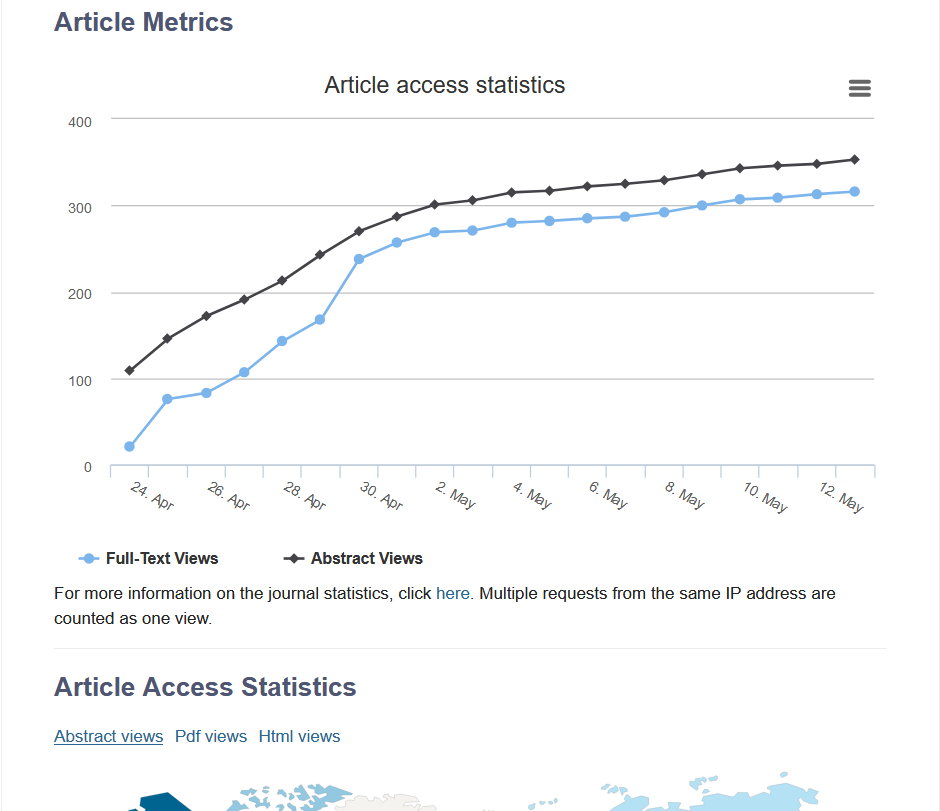
Very happy to see this https://openheritage3d.org/ but have some questions!
Also with 3D publishing, Professor Elaine Sullivan’s project on Digital Karnak was shown last Friday at CAA2019 in Krakow, Poland.
Dr Hafizur Rahaman and I just had an open access article published (online) “3D Digital Heritage Models as Sustainable Scholarly Resources” in MDPI Sustainability in a Special Issue.
Abstract
If virtual heritage is the application of virtual reality to cultural heritage, then one might assume that virtual heritage (and 3D digital heritage in general) successfully communicates the need to preserve the cultural significance of physical artefacts and intangible heritage. However, digital heritage models are seldom seen outside of conference presentations, one-off museum exhibitions, or digital reconstructions used in films and television programs. To understand why, we surveyed 1483 digital heritage papers published in 14 recent proceedings. Only 264 explicitly mentioned 3D models and related assets; 19 contained links, but none of these links worked. This is clearly not sustainable, neither for scholarly activity nor as a way to engage the public in heritage preservation. To encourage more sustainable research practices, 3D models must be actively promoted as scholarly resources. In this paper, we also recommend ways researchers could better sustain these 3D models and assets both as digital cultural artefacts and as tools to help the public explore the vital but often overlooked relationship between built heritage and the natural world.
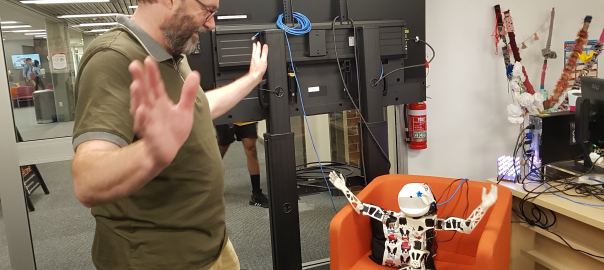
I was indirectly asked at the Humanities, Arts and Culture Data Summit and DARIAH Beyond Europe workshop, 27-29 March 2019, Canberra, whether the most important question /priority/importance was Technology or Culture.
Now a day and an Australian State later, I may have slightly misinterpreted the question or the intention behind it but I thought I would answer here because
I have fairly specific ideas of culture and cultural heritage and technology.
And what does technology do? It helps the passing down and preservation of these cultural objects and non-objects. I don’t separate technology and culture, because culture needs to control the art of production, of bringing things into existence and keeping them there. When culture becomes consumer production but the production is not part of the cultural life cycle of creator and community, that is where culture weakens, and we could blame that on technology, but that is because we have started thinking of technology as an impartial, neutral, scientific way things have to be. Where tangible heritage or intangible heritage is created by people and needs to be valued, preserved and appreciated by future people, technological factors are never impartial and purely scientific, because technology is there to serve people not machines.
Let me give you another example, when I talk of a digital scholarly ecosystem, digital humanities people understand what I mean, a programmer I spoke to could only think of ecosystem as supplying people with computers and other digital devices and ensuring they always had the latest model and the manufacturers could charge as much as possible to resolve for their shackled customer this perceived and designed obsolescence. That is not what I mean by a digital ecosystem because the users are continually charged with replacing and learning the device itself, they will have little time to actually build, value, communicate and preserve something.
Now I do worry that we increasingly see technology as meaning digital technology, and there are commercial and academic reasons to focus on the equipmental, because funding is more straightforward and goes through fewer people who can raise their careers and profiles. Culture does not have to employ digital technology, and we straitjacket and possibly impoverish it if we continue to think of data as only digital (data predates digital) and technology as only digital (again, techne is a concept from Ancient Greece).
However, they don’t generally make these objects and they don’t generally ensure these objects and non-objects are maintained and used. And this, I think, is a problem for digital humanities, we have few ways to value these people and the work they do and the communities they serve.
And in our session yesterday a professor said there should be a Centre of Excellence in Digital Cultural Heritage in Australia. The audience reaction was highly favorable then and in the tweets afterwards. And someone like me should surely agree, right? I have been writing and designing and teaching about digital cultural heritage for two decades. Well yes and no. I believe it should happen and come from the GLAM sector and indigenous and other local communities, because they are the best guardians and trustees.*
A Centre of Excellence will raise the profile and increase the collaboration potential of academics and academic groups, but it also implies if you are not in a Centre of Excellence you are not excellent. Is that what digital heritage should support? I think it should be bigger: a National Collaborative Research Infrastructure, or equivalent, supported and driven by the GLAM sector, perhaps helped in focus by academics. Once you have your NCRIs, build your Centre of Excellence around that. Because a Centre of Excellence of digital cultural heritage would and should be huge, it may be better to have smaller and more directed Centres of Excellence. Are there not enough humanities academics in Australia to apply for more than one?
* I see humanities as being larger than humanities academics and researchers. I believe it also includes the creators, the preservers and the audience. At humanities research infrastructure meetings we are asked what we want, but surely this is tied to the problem of what is best for Australian humanities, creators and communities?
NB thus blogpost has been modified, just to stick to the topic and will be modified again when I think of a few more qualifying statements.
Our abstract:
Integrating 3d Models and GIS for Digital Cultural Heritage
Recent advances in technology have helped make the capture and modelling of 3D digital cultural objects increasingly affordable. Ever growing numbers of cultural institutions have been digitizing their digital artefacts and sites. Regards the availability of 3D geometric modelling methods and 3D file formats, there are hundreds to choose from. However, an extremely challenging task is to identify the most appropriate 3D geometric modelling method and file format for the specific purposes of digital cultural heritage. In order to overcome those challenges, this paper first summarizes the most-common 3D geometric modelling methods such as constructive solid geometry, non-uniform rational B-splines, triangle meshes, and discusses their advantages, disadvantages and their typical application in the digital cultural heritage domain. Second, various 3D file formats are systematically analysed and discussed, with particular reference to architecture, to archaeology and to heritage studies. Third, future possibilities of 3D file formats and their potential for linking with Geographic Information Systems (GIS) and geospatial databases are outlined. What are the successful exemplars but also major challenges for linking GIS, 3D models and heritage aims? Where do these modelling methods, formats, aims and disciplines converge or diverge? Would such combinations create major problems for archives?
Keywords: 3D geometric modelling, 3D file formats, 3D archives, digital cultural heritage
Ikrom Nishanbaev, Erik Champion, Hafizur Rahaman, Mafkereseb Bekele
Thanks to Curtin’s Faculty of Humanities and Computational Institute I attended the Australian Academy of Humanities 2 day Humanities Arts and Culture Data Summit, 14-15 March, hosted by the AHA https://www.humanities.org.au/ at the National Film and Sound Archive (NSFA), Canberra.
The below is from a brief report but may be of interest to those who’d like a quick guide to what is happening regards digital humanities research infrastructures at a National level in Australia.
SUMMARY:
Quick guide to social sciences/sciences platforms and RIs
Humanities
Others included (but there were more)
We regularly hear about the ‘power of the archive’ and know about the importance of the archive for accountability and identity within our societies. But do we ever actually stop to think about the term ‘power of the archive’? What is the nature of this power? Do archives have inherent power? Or is it those…
via Considering “The Power of the Archive” — Identity & Archives

Thanks to a Curtin MCCA Strategic Grant six reseachers and Library staff at Curtin University bought Virtual Reality and Augmented Reality equipment and ran two events to help staff develop digital prototypes and experiences using cultural data resources and digital humanities tools and techniques
Our Curtin Cultural Makathon, great fun, four finished projects, excellent judges and data mentors, fabulous colleagues and atmosphere, plus pizza! Must do again but with more 3D and entertainment technology! Slides: http://slides.com/erikchampion/deck-4#/
There are also GLAMVR16 slides: http://slides.com/erikchampion/glamvr16-26-08-2016#/
Yes you can control the slides.com slides from your phone! if you like the slides.com technology, check out http://lab.hakim.se/reveal-js/
Want Western Australian / Australian datasets for your own hackathon? http://catalogue.beta.data.wa.gov.au/group/about/curtin-cultural-makathon
Seems to me we leave this sort of topic to keynote speakers who almost accidentally argue for a field/issue/method/tool that they themselves (research centre, department) and associates are currently working on.
Human nature. But if people who are currently not working on defined projects/tools/applications/sites met and discussed the issues what would they say? I’ll stick my neck out and say
1 Impossible to find, access and use/re-use the models, tools, paradata.
2 No consistant, standard framework.
3 No best practices, prizes*, competitions (but plenty of surveys and state of the art papers-only they read to me more as literature reviews).
4 Interaction is not saved ( not just user data but the game mechanics and interactive tools and techniques).
How would this lead to challenges?
*Best of heritage? I had high hopes but I met an organiser who told me this is not primarily what Best of heritage does. It isn’t a ranking/rating/critical appraisal system but a communication of what is happening in the (museum) field.

Join the School of Media, Culture and Creative Arts and Curtin Library Makerspace to hack cultural datasets and heritage information.
Use government and institutional research data, gallery, library, archive and museum information as data sources. Experiment with data for a research project or proposal; create something accessible, beautiful and/or useful using craft, games, augmented or virtual reality, apps or something else: it’s up to you.
Date: Thursday 10 November 2016 (afternoon) & Friday 11 November 2016 (9am – 5pm)
Location: Makerspace, level two, Robertson Library (building 105), Curtin University, Kent Street, Bentley
Registration: Free via Eventbrite
For more information visit the Curtin Cultural Makathon website.
To volunteer to assist with data or to sponsor a prize please contact Dr Lise Summers or Dr Karen Miller.
Curtin Cultural Makathon is funded by a MCCA strategic grant. For more details on the project contact Professor Erik Champion.
The call for PhD scholarships (UNESCO Cultural Heritage and Visualisation) at Humanities, Curtin University, has now been extended to 17 October 2016. See https://scholarships.curtin.edu.au/scholarships/scholarship.cfm?id=2782.0
I can be contacted for enquiries or submission but I am away from 1-16 October so email replies may be slow.
Time: 15:45 – 17:15 (session) , Wednesday 5 October.
Location: Area della Ricerca di Genova, Via De Marini 6, 16149 Genova (Genoa), Italy.
Title: The Missing Scholarship Behind Virtual Heritage Infrastructure
This theoretical position paper outlines four key issues blocking the development of effective 3D models that would be suitable for the aims and objectives of virtual heritage infrastructures. It suggests that a real-time game environment which composes levels at runtime from streaming multimédia components would offer advantages in terms of editing, customisation and personalisation. The paper concludes with three recommendations for virtual heritage infrastructures.
Time: 11:00 – 12:00 (short paper, session) , Thursday 6 October.
Location: Area della Ricerca di Genova, Via De Marini 6, 16149 Genova (Genoa), Italy.
Title: 3D in-world Telepresence With Camera-Tracked Gestural Interaction
While many education institutes use Skype, Google Chat or other commercial video-conferencing applications, these applications are not suitable for presenting architectural or urban design or archaeological information, as they don’t integrate the presenter with interactive 3D media. Nor do they allow spatial or component-based interaction controlled by the presenter in a natural and intuitive manner, without needing to sit or stoop over a mouse or keyboard. A third feature that would be very useful is to mirror the presenter’s gestures and actions so that the presenter does not have to try to face both audience and screen.
To meet these demands we developed a prototype camera-tracking application using a Kinect camera sensor and multi-camera Unity windows for teleconferencing that required the presentation of interactive 3D content along with the speaker (or an avatar that mirrored the gestures of the speaker). Cheaply available commercial software and hardware but coupled with a large display screen (in this case an 8 meter wide curved screen) allows participants to have their gestures, movements and group behavior fed into the virtual environment either directly or indirectly. Allowing speakers to present 3D virtual worlds remotely located audiences while appearing to be inside virtual worlds has immediate practical uses for teaching and long-distance collaboration.
Conference URL: http://gch2016.ge.imati.cnr.it/index.php/technical-program
Well #GLAMVR16 was the twitter hashtag for Friday 26 August’s event held at the HIVE Curtin university, Perth. In the morning two invited speakers (Assistant Professor Elaine Sullivan and Mr Conal Tuohy) gave talks on Digital Karnak and Linked Open Data. They were followed by myself and my colleagues at the School of Media, Culture and Creative Arts, then a workshop on Trove data feed into UNITY game engine dynamically (Mr Michael Wiebrands) and Augmented Reality, Vueforia>Unity (Mr Dominic Manley).
There were three themes/reasons for the morning talks and afternoon workshops.
1.Digital Heritage: Workflows & issues in preserving, exporting & linking digital collections (especially heritage collections for GLAM.
2.Scholarly Making: Encourage makerspaces & other activities in tandem with academic research.
3.Experiential Media: Develop AR/VR & other new media technology & projects esp. for humanities.
The event was part of a strategic grant received from the School of Media Culture and Creative Arts, so thanks very much to MCCA!
Schedule and links to slides
| Session title and links to slideshare | PRESENTER |
| Introductions | Ear Zow Digital |
| Digital Karnak | Elaine Sullivan, UCSC USA |
| Linked Open Data Visualisation | Conal Tuohy, Brisbane |
| MORNING TEA | morning TEA |
| Making collections accessible in an online environment | Lise Summers |
| Digital scholarship, makerspaces and the library | Karen Miller |
| Digital Heritage Interfaces and Experiential Media | Ear Zow Digital |
| Simple Biometric Devices for Audience Engagement | Stuart Bender |
| Usability of interactive digital multimedia in the GLAM sector | Beata Dawson |
| Emotive Media – Visualisation and Analysis of Human Bio-Feedback Data | Artur Lugmayr |
| Visualising information with RAM iSquares | Pauline Joseph |
| LUNCH | |
| digital workflows (UNITY) | Michael Wiebrands |
| Introduction to Augmented Reality | Dominic Manley |
| final questions/social networking/ SUNDOWNER | Centre for Aboriginal Studies Foyer |